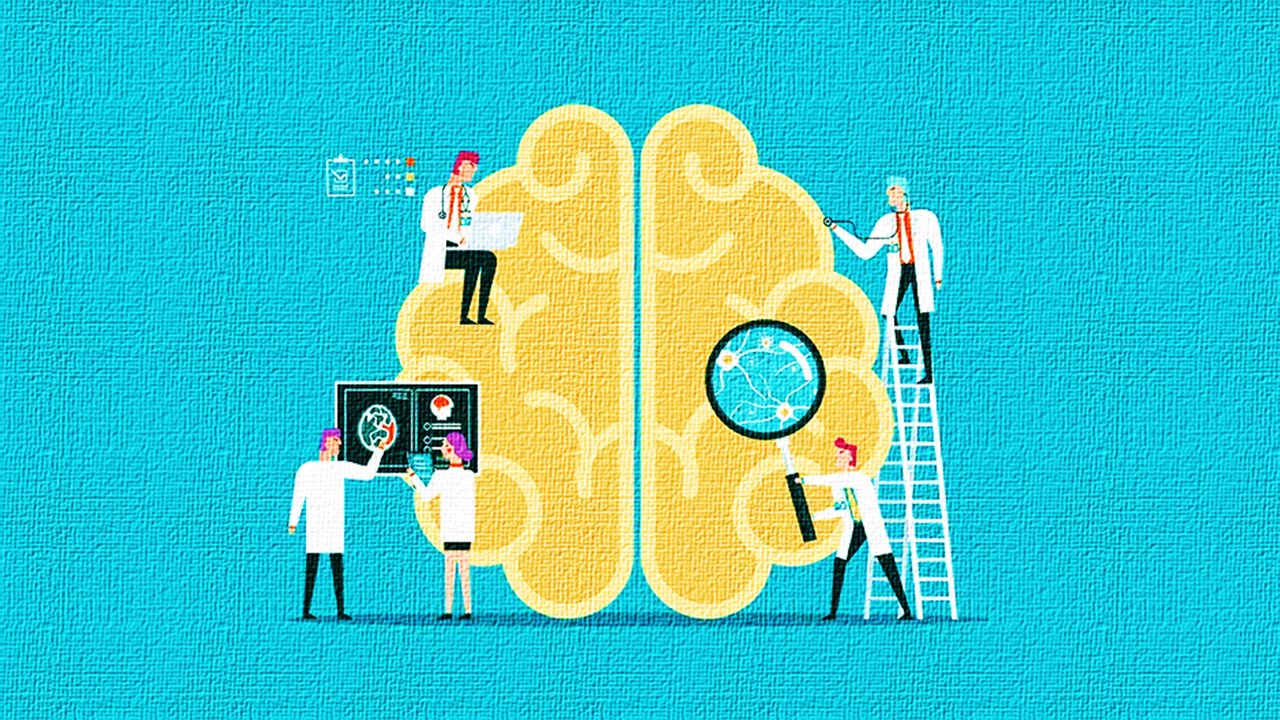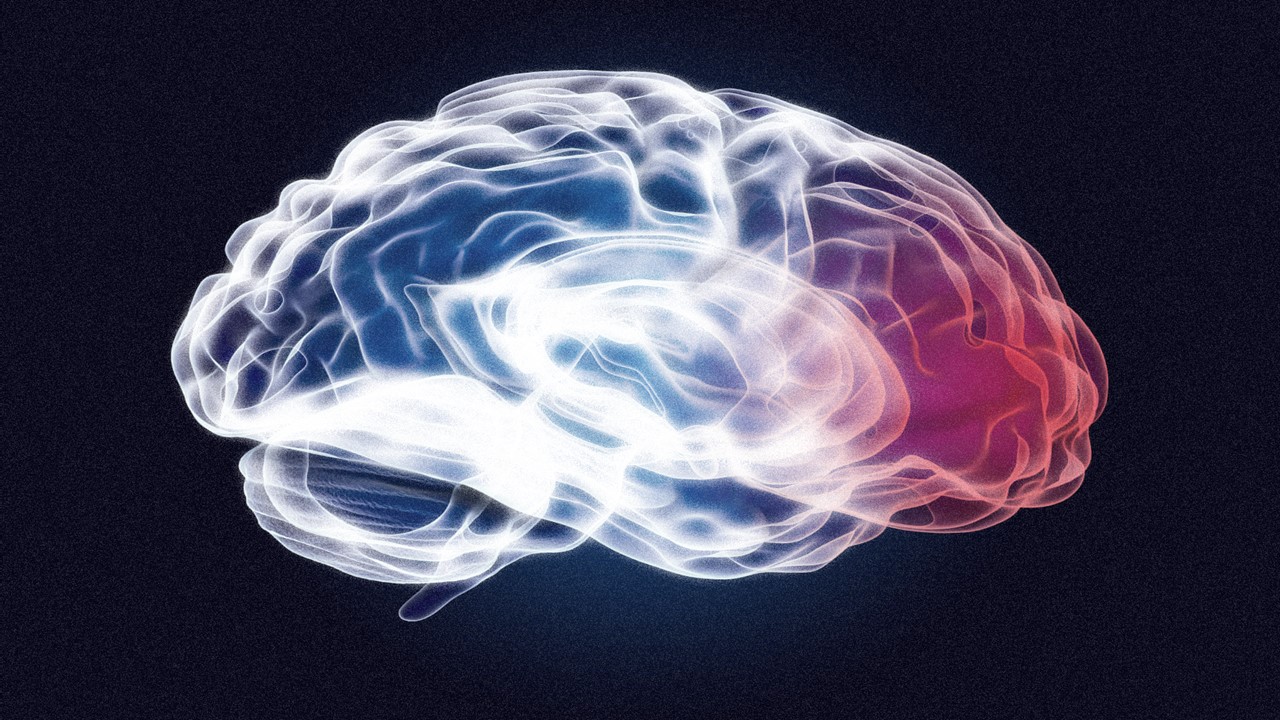A New Way to See the Mind: Metabolomics and the Adolescent Brain
Adolescence is a time of profound growth—a whirlwind of physical, emotional, and neurological changes. But for some, these years come with a darker undercurrent: fleeting delusions, paranoia, hallucinations. While these psychotic-like experiences (PLEs) might seem transient, they can sometimes signal the early stages of severe mental illnesses like schizophrenia. What if we could catch the first whispers of these conditions before they fully take hold?
A new study may bring us closer to that reality. By examining the metabolites—the tiny molecules that fuel and signal the body’s cellular processes—in adolescents with depression, researchers are uncovering a biochemical blueprint for PLEs. This could reshape how we predict and prevent psychosis, shifting the focus from subjective symptom tracking to the objective realm of biochemistry.
Understanding Psychosis: A Multifaceted Disorder of Mind and Biology
Psychosis, a state characterized by a disconnection from reality, encompasses a range of symptoms, including hallucinations, delusions, and disorganized thinking. At its core, psychosis is not a singular disease but rather a symptom of underlying conditions such as schizophrenia, bipolar disorder, or severe depression. Pathophysiologically, psychosis is often linked to disruptions in neurotransmitter systems, particularly dopamine and glutamate. Overactivity of dopamine in certain brain regions, like the mesolimbic pathway, is thought to contribute to hallucinations and delusions, while hypoactivity in other areas may explain negative symptoms, such as emotional withdrawal. Dysregulation of glutamate, another key neurotransmitter, has also been implicated, particularly in its role in synaptic plasticity and cognitive functions.
Genetic predisposition plays a significant role in psychosis, with studies suggesting heritability rates as high as 80% for schizophrenia. Specific genetic variants, such as those affecting the COMT gene or the DISC1 protein, influence neurotransmitter metabolism and brain development, heightening the risk. However, genetics alone cannot account for the onset of psychosis. Environmental factors, such as prenatal infections, early-life trauma, and cannabis use during adolescence, interact with genetic vulnerabilities to increase susceptibility. For instance, cannabis use has been shown to exacerbate psychosis risk in individuals with a specific variant of the COMT gene, highlighting the interplay between biology and environment.
Diagnosing psychosis requires careful evaluation of symptoms and underlying causes. Clinicians rely on structured interviews, such as the Structured Clinical Interview for DSM (SCID), alongside assessments of mood, cognition, and behavior. Brain imaging and neurophysiological tests may support the diagnosis by identifying structural or functional abnormalities, such as reduced gray matter volume or dysregulated brain wave activity. However, the heterogeneity of psychosis poses challenges, as symptoms overlap with other psychiatric conditions, necessitating a comprehensive and nuanced approach to diagnosis.
The prognosis of psychosis varies widely and depends on factors such as the underlying condition, treatment adherence, and early intervention. Untreated psychosis can lead to significant functional impairments, including difficulties in maintaining relationships, employment, and overall quality of life. Early detection and intervention are crucial, as research shows that reducing the duration of untreated psychosis improves long-term outcomes. Comprehensive treatment plans that combine behavioral, pharmacological, and psychosocial interventions have proven effective in managing symptoms and enhancing recovery.
Current management of psychosis involves both behavioral and pharmacological approaches. Antipsychotic medications, which target dopamine and serotonin receptors, remain the cornerstone of treatment. First-generation antipsychotics are effective but often associated with side effects such as movement disorders, while second-generation drugs offer broader efficacy with a more tolerable side-effect profile. Behavioral interventions, such as cognitive-behavioral therapy (CBT) for psychosis, help patients challenge delusional beliefs and develop coping mechanisms. Psychoeducation, family support, and vocational training further aid in rehabilitation, emphasizing the importance of a multidisciplinary approach to managing this complex condition. Together, these strategies highlight the intersection of biology, environment, and treatment in addressing psychosis.
Metabolomics: Decoding Life’s Molecular Signatures
Metabolomics, the comprehensive study of small molecules, or metabolites, within biological systems, has rapidly evolved into a cornerstone of modern biology and medicine. Its history is relatively recent compared to genomics and proteomics, with its roots tracing back to the 1970s and 1980s when nuclear magnetic resonance (NMR) spectroscopy was first used to study metabolic pathways. The term “metabolomics” gained traction in the early 2000s as advancements in analytical technologies enabled the simultaneous analysis of hundreds of metabolites. Today, metabolomics is recognized as a critical tool for understanding the biochemical underpinnings of health, disease, and environmental interactions.
At the heart of metabolomics lies the metabolome, the complete set of metabolites within a cell, tissue, or organism. Unlike static genomic data, the metabolome is dynamic, reflecting real-time physiological processes and environmental interactions. These small molecules—products and intermediates of metabolic pathways—offer a snapshot of an organism’s biochemical state, bridging the gap between genotype and phenotype. Changes in the metabolome can reveal shifts in energy production, immune responses, or oxidative stress, providing invaluable insights into health and disease.
Metabolites, the molecular players in the metabolome, encompass a diverse array of chemical compounds, including amino acids, lipids, nucleotides, and carbohydrates. These molecules are essential for sustaining life, acting as building blocks for macromolecules, signaling molecules for cellular communication, and energy currency for metabolic processes. Primary metabolites, like glucose and amino acids, are directly involved in growth and energy metabolism, while secondary metabolites, such as bile acids and neurotransmitters, often serve specialized functions. Their abundance and chemical diversity make metabolites ideal markers for studying physiological and pathological states.
Metabonomics, often used interchangeably with metabolomics, refers to the study of how metabolic profiles change in response to external stimuli or disease states. While metabolomics emphasizes the quantification and cataloging of metabolites, metabonomics focuses on the functional implications of these changes. This distinction has allowed metabonomics to play a critical role in personalized medicine, toxicology, and pharmacology, where understanding how metabolites respond to drugs or environmental stressors can inform tailored therapies and risk assessments.
The technological backbone of metabolomics lies in its analytical methods, which are divided into separation and detection techniques. Separation methods, such as gas chromatography (GC) and liquid chromatography (LC), isolate metabolites based on their physical and chemical properties. Detection methods, like mass spectrometry (MS) and nuclear magnetic resonance (NMR) spectroscopy, identify and quantify these metabolites with high precision. Recent innovations, such as ultra-performance liquid chromatography (UPLC) and tandem mass spectrometry (MS/MS), have pushed the boundaries of metabolite analysis, enabling the detection of even trace-level compounds in complex biological matrices.
Interpreting the vast datasets generated by metabolomic studies requires robust statistical applications and machine learning algorithms. Multivariate techniques, such as principal component analysis (PCA) and partial least squares (PLS), are commonly used to identify patterns and correlations within metabolomic data. Machine learning and data mining approaches, including random forests, support vector machines, and neural networks, are increasingly employed to uncover hidden relationships and predict outcomes. These computational tools not only enhance the precision of metabolomic analyses but also enable integration with other omics data, such as genomics and proteomics, to provide a holistic view of biological systems. Together, these advancements are transforming metabolomics into a powerful tool for systems biology and precision medicine.
The Metabolic Footprint of Psychosis
Adolescents, Depression, and Psychotic-Like Experiences
To understand the link between biochemistry and PLEs, researchers turned to a group of 76 adolescents, aged 14 to 20, who were battling depression. These young participants completed the Youth Experiences and Health (YEAH) questionnaire, a tool that measures six distinct PLE dimensions: delusions, paranoia, hallucinations, negative symptoms, thought disorder, and dissociation. The researchers also tracked factors like sleep quality, substance use, diet, and medication to provide a full picture of each participant’s mental and physical health.
Liquid Chromatography and the Metabolome
The study’s true breakthrough lay in its reliance on liquid chromatography–mass spectrometry (LC-MS), a technique that allowed scientists to map the molecular landscape of each adolescent’s blood. This meticulous process revealed 92 metabolites—molecules like amino acids, bile acids, and lipids—that act as signposts of cellular health, energy production, and immune activity. Each participant’s metabolome, a kind of biochemical fingerprint, was then linked to their reported PLEs.
Hallucinations Take Center Stage
Inflammation and Oxidative Stress: A Hallmark of Hallucinations
Among the six PLE dimensions, hallucinations stood out as having the strongest biochemical associations. Adolescents experiencing hallucinations showed patterns of inflammation and oxidative stress. For instance, levels of D-ribose-5-phosphate and adenine—molecules tied to cellular energy and stress responses—were lower than expected, suggesting that their cells were burning through resources to fight oxidative damage.
Meanwhile, neopterin, a marker of immune activation, spiked in those reporting hallucinations. This biochemical evidence supports a growing theory: that inflammation, particularly in the brain, may play a pivotal role in triggering psychotic symptoms.
Bile Acids and Mitochondrial Energy
Bile acids like chenodeoxycholic acid and cholic acid also emerged as key players. These molecules, crucial for lipid metabolism and energy regulation, were noticeably altered in adolescents with hallucinations. The findings hint at deeper disruptions in mitochondrial function, the energy factories of cells, which have long been implicated in the biology of schizophrenia.
The Cannabis Connection
Ketogenesis and Alternative Pathways
Cannabis use, long known to amplify psychotic symptoms, revealed its own distinct biochemical signature. Adolescents who used cannabis showed increased levels of medium-chain acylcarnitines—molecules that drive fat oxidation and ketone production. Elevated levels of acetoacetic acid, a key ketone body, suggested that cannabis may push the brain toward alternative energy sources, potentially overstimulating certain neural pathways.
This shift might explain why cannabis use seems to heighten the risk of hallucinations, creating a biochemical environment primed for altered perceptions.
A Double-Edged Sword
Interestingly, cannabis-linked pathways didn’t simply mirror those of non-cannabis-induced hallucinations—they diverged in critical ways. For example, hexanoylcarnitine and octanoylcarnitine, metabolites tied to energy production, were closely linked to cannabis use but not to endogenous hallucinatory experiences. These findings suggest that cannabis might trigger a separate biochemical cascade, adding a new layer to the complex relationship between the drug and mental health.
Beyond Hallucinations: The Broader Picture
Negative Symptoms and Thought Disorders
While hallucinations dominated the metabolomic landscape, other PLE dimensions revealed subtler patterns. Negative symptoms, such as emotional withdrawal, correlated modestly with disruptions in lipid metabolism and oxidative stress markers. Thought disorders, characterized by disorganized thinking, showed sporadic links to inflammation and mitochondrial dysfunction.
Dissociation: A Biochemical Enigma
Dissociative symptoms—the feeling of being detached from reality—proved the most elusive. Unlike other PLE dimensions, dissociation showed minimal correlation with metabolomic changes, raising questions about whether it operates through distinct or non-metabolic mechanisms.
A Promising Yet Preliminary Step
Strengths and Innovations
This study marks a turning point in how we approach early psychosis. By focusing on adolescents—many of whom were unmedicated—the researchers minimized confounding factors like long-term disease progression or drug effects. The use of LC-MS technology provided unparalleled insight into the molecular underpinnings of PLEs, offering a rare glimpse into the biochemistry of early mental health challenges.
Limitations and Next Steps
However, the findings are not without caveats. The sample size was small, and the lack of a healthy control group limits broader conclusions. Moreover, the cross-sectional design means that the study captures a single moment in time, leaving unanswered questions about how these metabolomic patterns evolve.
Future research must expand the scope, tracking larger cohorts over time to determine whether these biochemical markers truly predict psychosis. Integrating genetic and proteomic data could also deepen our understanding, paving the way for a more comprehensive model of mental illness.
The Future of Psychosis Prevention
Metabolomics Meets Psychiatry
The promise of metabolomics lies in its objectivity. Unlike behavioral assessments, which rely on subjective reporting, metabolomic profiles offer a quantifiable, biochemical snapshot of mental health. This could revolutionize how we detect and treat psychosis, enabling earlier and more personalized interventions.
Toward a Biochemical Diagnostic Toolkit
Imagine a future where a simple blood test could flag an adolescent as being at risk for psychosis. Armed with this information, clinicians could intervene before the first psychotic episode, tailoring treatments to address specific biochemical imbalances. For some, this could mean anti-inflammatory therapies; for others, lifestyle changes like diet modifications or cannabis abstinence.
A New Era of Mental Health
This study is just the beginning. As metabolomic technologies advance, they promise to transform psychiatry from an observational science into a predictive one. For adolescents teetering on the brink of psychosis, this shift could mean the difference between lifelong illness and a chance to thrive. The road ahead is long, but the potential to reshape mental health diagnostics is undeniable—and it starts with molecules as small as a drop of blood.
Study DOI: https://doi.org/10.1038/s41398-024-03163-9
Engr. Dex Marco Tiu Guibelondo, B.Sc. Pharm, R.Ph., B.Sc. CpE
Editor-in-Chief, PharmaFEATURES

Subscribe
to get our
LATEST NEWS
Related Posts

Neuroscience & Neuropharmacology
Cannabinoids and Autism: Evaluating Their Role in Sleep and Behavior
In the quest to improve the lives of individuals with autism spectrum disorder, rigorous science remains our most vital tool—revealing not just what works, but what does not.

Neuroscience & Neuropharmacology
Two-Dimensional Neural Geometry: A Revolution in Understanding Human Working Memory
Working memory, a cornerstone of human cognition, has long been mischaracterized as a passive storage system.
Read More Articles
Myosin’s Molecular Toggle: How Dimerization of the Globular Tail Domain Controls the Motor Function of Myo5a
Myo5a exists in either an inhibited, triangulated rest or an extended, motile activation, each conformation dictated by the interplay between the GTD and its surroundings.
Designing Better Sugar Stoppers: Engineering Selective α-Glucosidase Inhibitors via Fragment-Based Dynamic Chemistry
One of the most pressing challenges in anti-diabetic therapy is reducing the unpleasant and often debilitating gastrointestinal side effects that accompany α-amylase inhibition.













